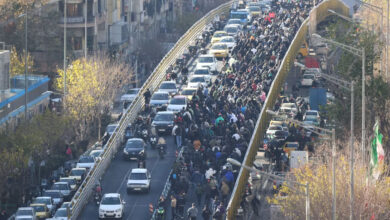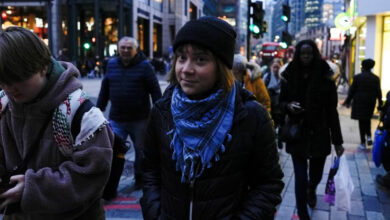
“He was maybe 30 or 40 meters (100 to 130 feet) away,” she recalls. “He was a police officer. And everybody knew him.”
Around her, she says, protesters were chanting “death to the dictator,” as two men tore down a billboard bearing the face of Iran’s Supreme Leader Ayatollah Ali Khamenei.
When gunshots interrupted the celebrations, Tavakolian moved to shield her 10-year-old twins and younger sister, who had accompanied her to the demonstration.
“I saw that he was pointing his gun at us. I was scared that he might shoot my children, I turned my head sideways,” she tells CNN. “It hit the corner of my eye.”
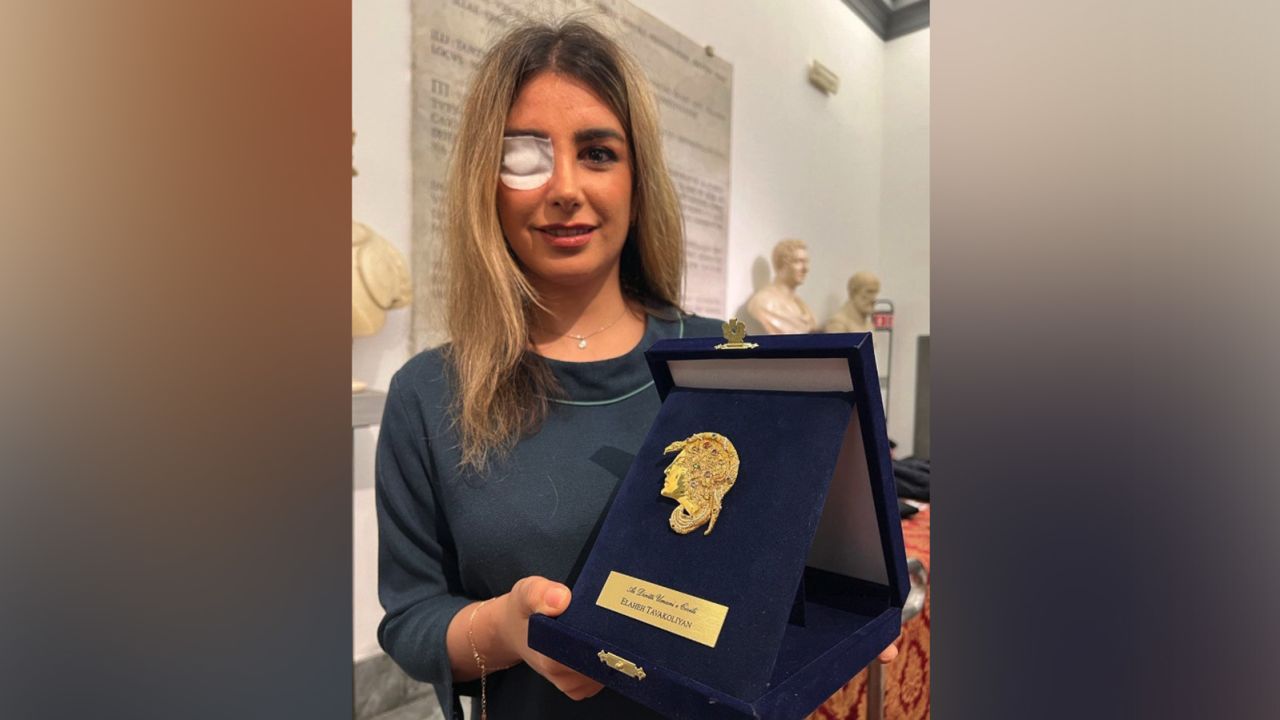
It was the evening of September 21, 2022, days after the death of Mahsa Jhina Amini in the custody of Iran’s notorious morality police. Flares of dissent were slowly lighting up cities and small towns like Esfarayen in the northeast of the country, where Tavakolian was shot.
In the face of a brutal crackdown by the regime, protests spread like wildfire in the following weeks.
“It was like a fire hidden under the ashes,” Tavakolian says of the protests.
“I had lots of discontent even before what happened to Mahsa. The corruption, the compulsory hijab, the dictatorship. There are a lot of problems in Iran. I personally was always a dissident. The poverty is unbearable. People can’t afford to live,” says the one-time PhD student who also worked in a factory, explaining what prompted her to join the protests.
Like her motives, her gunshot injury too would soon become a familiar story in Iran.
In a video a fellow protester later sent to her of the moments after her injury, she appears with a bloodied face, screaming in pain. Protesters rush to her aid, pouring water on her right eye.
But Tavakolian says she struggled to get to a hospital for the urgent medical treatment she needed.
“When I got shot, I could only see the blood. I covered my eye with my hand. I felt like if I took my hand off, my eyeball might fall out of its socket,” she says. “My children were just shouting ‘They killed our mum! Help!’” she tells CNN in an interview in Milan, Italy, where she has sought asylum.
She wells up with tears as she remembers the “bitterest” night in her life. Strands of hair conceal the right side of her face.
Frantic search for help
Taxi drivers, afraid of the police, didn’t stop to help. Tavakolian says a woman, driving her car, looked at her bleeding, locked the doors and drove away, she says. A man tried to steer her to an ambulance, but protesters pulled her away, saying he was a plain-clothed security agent, she says.
Finally, a couple in a car were brave enough to transport her to the hospital, she recalls, but it would take hours before she received the help she needed.
In the emergency room, medics washed and patched her eye, but the doctor refused to treat her, she says. “I clearly heard him saying, ‘I want nothing to do with those who are shot.’ I was left alone for two hours,” she says.
In a video taken of her that night, she appears in a blue gown in a hospital bed, her voice barely audible: “I’m in pain. It burns. I’m dying. I don’t want to be blind.”
It was only when she was moved to a hospital in a different city that she got proper medical treatment, she says. After the first surgery, doctors instructed her to stay in a dark room for almost a month to prevent further damage to her eye. The pellet that injured her was still lodged in her eye.
‘Deliberate’ targeting of eyes
In the confines of a dark room in November, she recalls hearing gunshots ringing out in the streets. Meanwhile, the demonstrations were growing bigger, as were the number of protesters with serious eye injuries. Tavakolian felt like her fight wasn’t over. By the time she went back to the streets to protest in November, the number of eye injuries among protesters was in the hundreds, according to Amnesty International.
More than 300 people were also killed in months-long protests, including more than 40 children, the UN said in November last year. US-based Human Rights Activists News Agency (HRANA) in January placed the number of dead at more than 500, including 70 children. Thousands were arrested across the country, the UN said in a report in June, citing research released last year by their Human Rights Committee.
“I felt like I must continue. I felt like my fight is not over yet. I must finish the path I stepped into. Blood that should not have been shed, had been shed.
“Referring to the death of Mahsa Amini, Tavakolian says, “A young woman who should not have been killed, had been killed. I felt it is my responsibility to go.”
Initially, she says, it would break her heart to look in the mirror and see a patch covering her right eye, but she soon began publicly posting about her experience on her Instagram page.
A photo with a white heart covering her injured eye became a symbol for protesters with similar injuries.
Rights defenders and activists allege that the targeting of eyes was part of an intentional government plan to punish protesters.
“The attackers have therefore been executing a deliberate and systematic plan to blind protesters by shooting at their eyes,” activist media group IranWire wrote in a report that documented at least 580 cases, with injuries resulting from being hit by pellets, teargas canisters, paintball bullets or other projectiles.
At the time, more than 100 Iranian ophthalmologists sent a public letter to the government noting the surge in cases and “warning about the irreparable consequences of such severe eye injuries.”
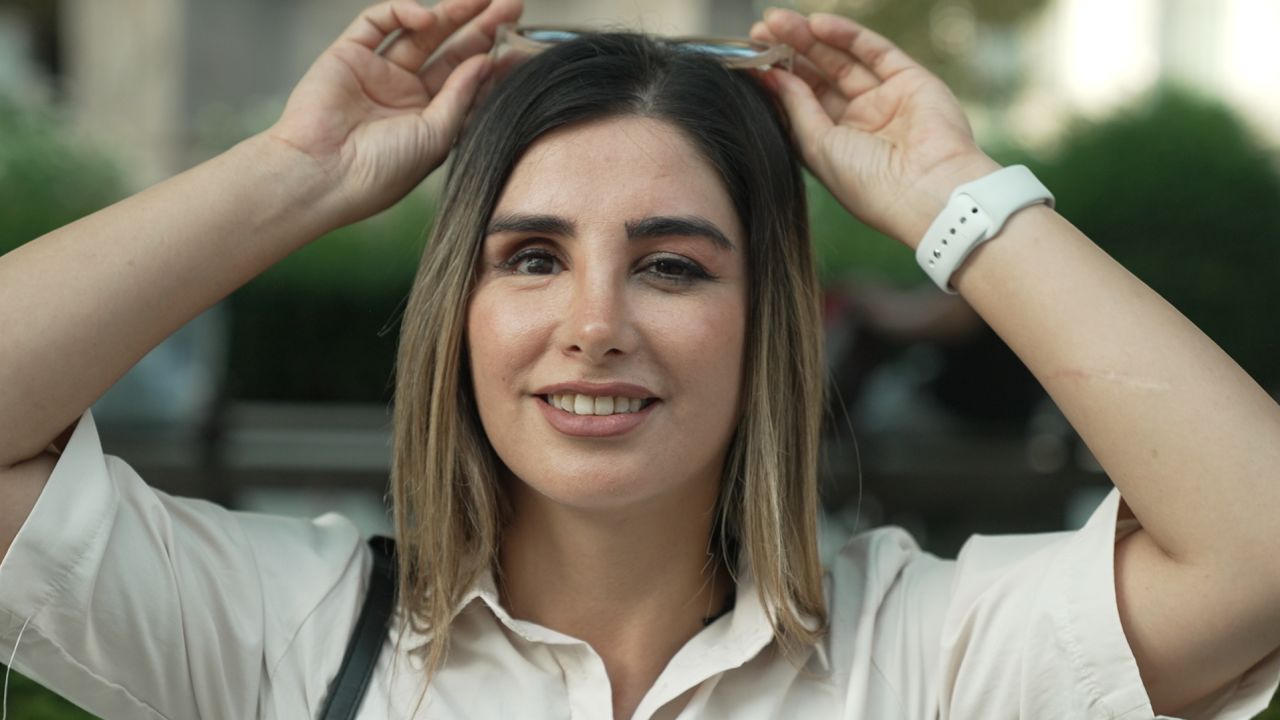
Iranian authorities have previously rejected such accusations. A billboard photographed in Iran at the time depicted people claiming they were injured in the eye as liars.
Authorities have not yet responded to CNN’s request for comment.
‘They cannot stop the spring’
Still hopeful her eye could be saved, Tavakolian was due to have a third surgery in Iran in November, but says she was refused treatment due to her social media activism. She also says she received a summons from the intelligence ministry accusing her of leading riots and damaging public property.
Her eye eventually became infected. Fearing she would lose sight in that eye permanently and concerned for her safety, Tavakolian left the country in March without her family, who were unable to leave with her. She was able to seek treatment in Milan with the help of Italian journalist Roberta Rei, who had covered her story and facilitated her trip. When doctors at the city’s San Raffaele Hospital discovered that the pellet had moved, they decided to remove her right eye to save her left one.
“I endured all that hardship so that I can get my eye back. But suddenly, they told me that my eye and the pellet must be removed together,” she recalls, in tears.
Now fitted with a prosthetic eye in Italy, Tavakolian is coming to terms with her new reality. Her biggest concern is whether she will ever see her children again.
“My situation is very tough. I came here injured, alone with nothing, and I have to start over. I really hope that my life can get back on track and peace comes back to my life,” she says. She has applied for asylum and is taking Italian language classes.
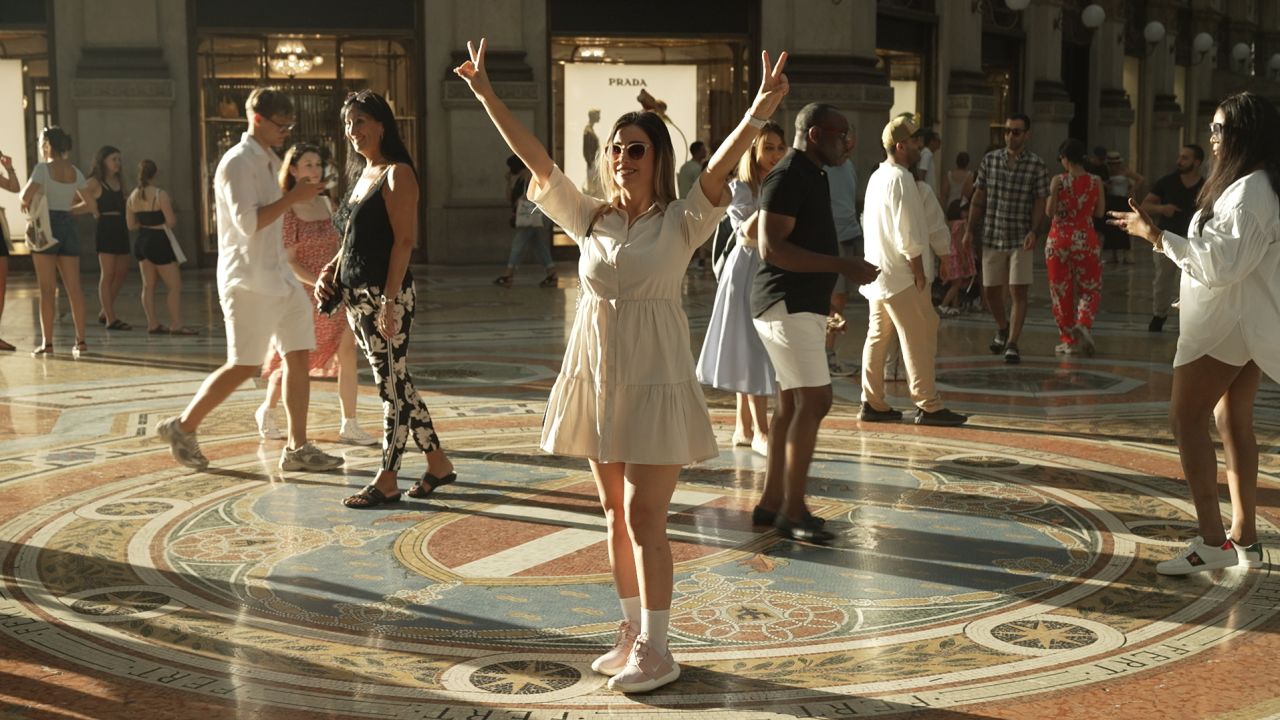
She dreams of going back to Iran one day, but until then, she says, she’s determined to be a voice for those inside the country. In the face of a deadly regime crackdown, protests died down in Iran earlier this year. But traces of a movement that started with some women burning their headscarves are still visible. Women can be seen walking through some streets and markets in Iran without their heads covered, despite a renewed government campaign to penalize them for this.
Iran’s morality police resumed headscarf patrols in July and Iranian authorities are considering a draconian new bill on hijab-wearing that experts say would enshrine unprecedentedly harsh punitive measures in law.
“So many say this revolution is over. But it is not over,” Tavakolian says. “Across the country women are now going out without hijab. Because they are no longer afraid of them. This is our method of civil resistance.”
Walking through the busy streets of Milan, she raises her hands, flashing a victory sign. She sits down and removes her big sunglasses, pushing her hair back, revealing the prosthetic eye and a big smile.
“They shot my eye and they shot others, but the struggle is going on. No matter how many they kill, they cannot stop the spring from coming; they cannot keep the freedom from returning to us,” she says.
Omid Shams contributed to this report.

